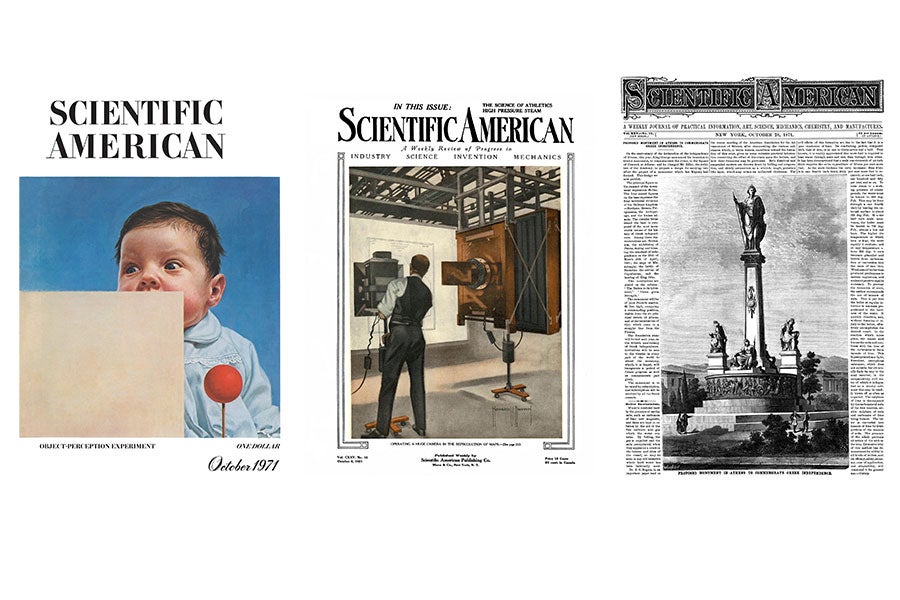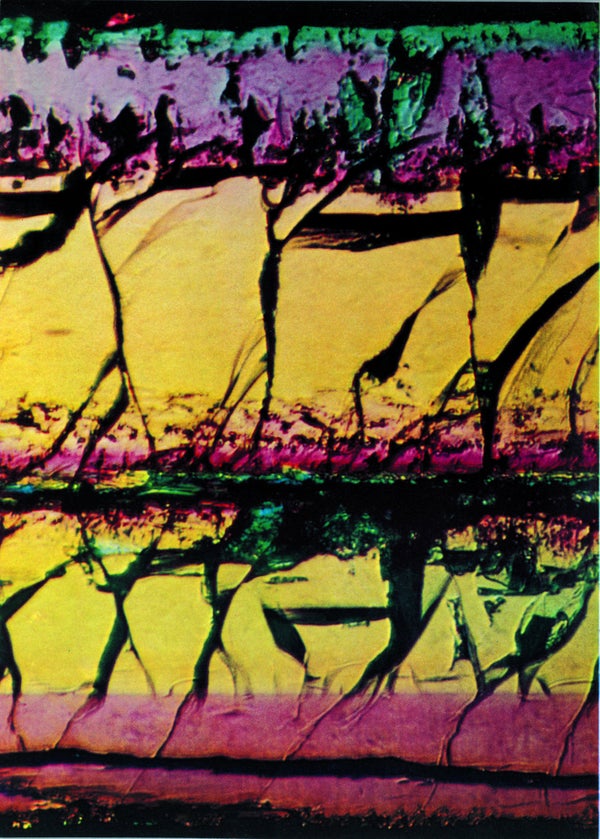1971
Jupiter Pioneers
“Two 560-pound spacecraft are being prepared for the longest flight yet attempted: a mission to Jupiter. Pioneer F and Pioneer G will each be equipped with 11 instruments. The voyages will take between 19 and 32 months and will cover 600 million to 900 million kilometers. Each spacecraft will spend about four days in the vicinity of the solar system's largest planet. Digital data will be transmitted to the Earth at the rate of 1,024 bits per second and received by three dish antennas with a diameter of 210 feet: one in California, one in Australia and one in Spain. Power will be supplied by plutonium thermoelectric generators producing 40 watts at the start of the mission.”
On supporting science journalism
If you're enjoying this article, consider supporting our award-winning journalism by subscribing. By purchasing a subscription you are helping to ensure the future of impactful stories about the discoveries and ideas shaping our world today.
The craft, more commonly known as Pioneer 10 and 11, operated much longer than anticipated. Pioneer 10 sent signals until 2003. Today both craft are billions of kilometers from Earth, beyond our solar system.
Cable TV: 12 Channels
“At the beginning of 1971 there were 2,500 cable television systems serving 5.5 million subscribers in the U.S. At first it was a simple arrangement for bringing a good television signal into a home that received a poor one or none, often called ‘community antenna television,’ or CATV. Now cable can provide a subscriber with many more channels than there are programs to fill them. All systems built during the past three years have had at least 12 channels. The technology for carrying up to 80 black-and-white channels has been developed, but an increasing amount of reception is in color. Here the limitation resides in the receiver. Standard home television sets cannot receive more than 12 color channels without added electronic equipment.”
1921
Do Moths Use Wireless?
“How does the female moth attract males? It is not by scent, for the males travel down the wind to where the female is. Another suggestion is that the males are attracted by sound, but the female Vapourer has been enclosed in a soundproof box and still the males come to her. It has lately been suggested that moths communicate by means of ‘wireless’—electromagnetic waves of exceedingly short wavelength. Probably the most sensitive organs that moths possess are their antennae. The antennae of the female, who is the transmitter, differ from those of the male, who is the receiver. This fact agrees with the design of wireless instruments. Another curious point is the behavior of the male as he nears the place where the female is stationed. Often he will alight in a very uncertain manner, moving his antennae about much the way a wireless operator will swing his direction-finding frame to discover the quarter from which the signals are coming.
Research now indicates that male moths smell pheromones secreted by females.
1871
Tobacco Ills
“There is much to be said for and against tobacco. A habitual ‘chewer’ will consume four ounces per week. This is seventeen and one half pounds per year of ‘hard stuff,’ mingled with sand, stems, impure molasses, olive oil, chips and concentrated dirt and refuse of all kinds. A speaker at the State Dental Society said the destructive effects of tobacco upon the teeth were both mechanical and chemical. Returns from Guy's and St. Bartholomew's hospitals tell us that, in all cases of cancer of the mouth, the patient had been using a pipe. Nervousness, loss of appetite, bad dreams, vertigo, indigestion, consumption, sterility and other ills which affect the nervous system may be traced to tobacco.”
Have Corpse, Will Paint
“The remains of the Italian patriot, poet and scholar, Ugo Foscolo, were exhumed at Chiswick churchyard, England, after forty-four years of interment. The body was intact, and the features were still perfect. The whiskers were still there. His skin, now of a pale gray color, remained unshrunken, the pores and textures also uninjured. With the view of making a historical painting, Signor Caldesi took a photograph of the body as it lay in its coffin, which was closed again and officially sealed.

